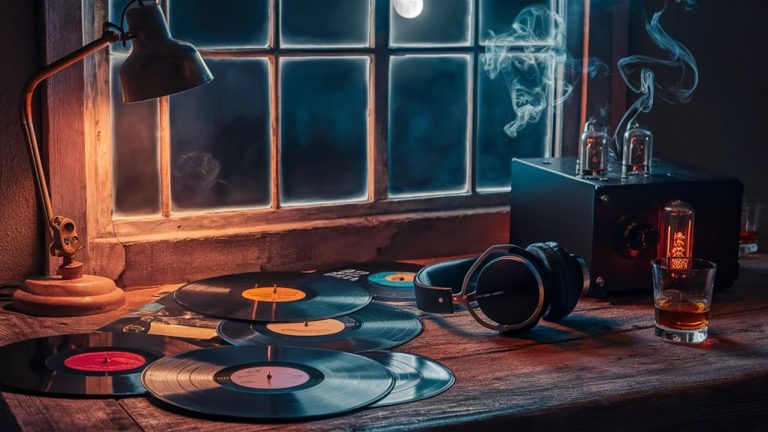
Top Tips for Great Karaoke Shows

Get Ready Before the Show
Get there early to check the sound and get to know the karaoke jockey (KJ). Knowing the sound set-up means a better sound and no tech issues while you sing.
Sound and Microphone Tips
Stand near the sound system, holding the mic right – 4-6 inches away, at a 45-degree angle. This way, your voice stays clear and the set-up has less bad noise. 현지인 추천 장소 알아보기
Picking Songs and How to Sing Them
Pick songs you can sing well and know the main bits by heart for more sureness. Look at the people there and pick songs that fit the mood. Keep a good show presence by:
- Looking at people as you sing
- Moving on purpose
- Controlling your voice well
- Showing you are sure of yourself
Plan for Issues and Getting Better
Plan for tech issues. Work on controlled sound instead of hard songs. Turn surprise problems into good show bits by quick thinking and staying cool.
Extra Tips for Top Singing
- Watch sound levels
- Work on breathing
- Keep the mic in place when you move
- Watch how the people react and match that
- Make special bits your own
- Sync well with background music
These tips will lift your normal singing nights to pro-level fun, good for any place or crowd.
Know Your Sound Gear
How to Be Great with Karaoke Sound Systems
Know Your Sound Set
Knowing your sound gear helps you sing your best.
Get to the place early to look over the sound gear and do a full mic check.
Main Sound Tunes and Fixes
Learn the main sound controls you get in pro karaoke setups:
- Set the right volume
- Tune the main volume
- Change the echo
- Adjust the sound quality
Best Ways with the Microphone
Handling the mic right changes how you sound.
Keep the mic 4-6 inches away as you sing, and change this based on the song:
- Move in for low, soft bits
- Back up for loud, strong parts
- Avoid where the wireless goes bad
- Watch for and stop feedback
Room Sound and Where to Sing
Learning room sound lifts your singing:
- Find where sound bounces
- Work out speaker areas
- Find the best spots to stand
- Use the room’s sound well
This planned way of handling sound means your voice carries well and feels pro.
Pick Right Songs
Choosing the Best Songs for Your Voice
Know Your Voice Well
Check your voice range to sing better.
Before picking songs, know your range with a piano app or online test. This tells you if you are a bass, baritone, tenor, alto, or soprano, helping with song choice.
Pick Songs Smartly
How you pick songs should line up with what you can naturally sing well.
Pick songs where the tune is mainly in your middle range, so you can sing strong and steady. Good singing matches your voice type with the right songs.
Tweak Songs to Fit
Change the Key
Use the karaoke’s key-change tool to make hard songs reachable. This keeps your voice comfy and the song’s feel right. This means you hit notes right and don’t strain your voice.
Tips for Better Performances
- Try the chorus first
- Stick to what feels good for your voice
- Pick simple over hard
- Change songs to match your voice
- Keep your voice good by choosing right
Good singing comes from smart song choice, not just trying to sound like the original. Choosing right lets you shine more often.
Look at the Room
How to See What the Crowd Wants

Get the Crowd Right
Reading the room is key to good shows.
Great singers watch the crowd’s mood and what they like before picking songs.
Spot patterns of age, mood, and how they react to plan the best song list.
What to Watch in the Crowd
There are key things to look for in a crowd:
- Who is there
- What music is on
- How people react
- Energy through the night
Plan Your Show Right
Pick right for the place is key to winning crowds.
Country spots need different songs than city spots, and mixed ages need a good mix of music.
Best show times need high-energy songs, early times are better for slow songs.
Signs from the Crowd
Look for clues in how they act:
- Which songs get them going
- What styles they like
- How the energy moves during the night
- What types they go for through how they react
Keep an eye on these hints to keep your songs in line with the crowd.
Great singers change things up based on what they see there and then.
Practice with the Microphone
Getting Great with the Mic
Right Ways to Hold the Mic
Good mic skills make a big difference.
Professional mic use means clear sound and good singing through any sound set-up.
Best Mic Spot and Distance
Hold the mic at a 45-degree angle, about 2-3 inches away for the best sound.
This spot stops bad sound and keeps your voice clear.
For stronger or softer singing, move the mic as you go:
- Back a bit for strong high bits
- Close for soft parts
- Keep the angle right as you move
How to Hold and Where to Put Your Hands
Holding it right matters a lot for sound.
Hold the body of the mic firm, below the top. Don’t hold the very top.
This stops:
- Bad low sounds building up
- Screechy feedback
- Signal trouble
What to Watch While You Sing
Keep an eye on mic buttons when you sing, know where the on/off and volume are.
For mics without wires, keep away from parts that send the signal to keep sound smooth.
Move well with the mic in place for a smooth show.
Moving Right on Stage
Build a showy stage act by moving right and keeping good mic skills. Focus on:
- Keeping the mic close enough
- Keeping the angle stable
- Moving smooth from spot to spot
- Use your other hand to add to the show
Own the Stage
How to Rule the Stage: The Best Show Guide
How to Stand and Move
Control the stage starts with how you stand. Have your feet apart as wide as your shoulders, pull your shoulders back, and lift your chin a bit to show sureness and power.
This basic way of standing helps your breathing and looks strong.
Moving for the Song
How you move should go with the song’s feel. Slow songs need small moves and deep looks, while fast songs work with big moves over the stage.
Pick three main spots to stand and move between them on purpose for the most effect.
Connecting with People
Touching the crowd means looking right at them. Look at different parts of the crowd, holding the look for 2-3 seconds to make a link.
In big song parts, look just over their heads to make it big without making it too hard on them.
Showing Feelings Through How You Act
Real show feelings need your moves to match the song words. Sad songs need small, close moves, while happy songs need big, open moves.
Match how strong you act to the story of the song to really tell the story.
Main Show Bits:
- Where to stand
- How to move
- Touching the crowd
- Real feelings
- How you show it
- Show feel
Dealing with Tech Problems Smoothly
Fixing Tech Troubles in Karaoke
Stop Tech Issues Before They Start
Good prep begins with meeting your karaoke jockey (KJ) before you start.
This bond means faster fixes for issues and help for your show.
A fast sound check and looking at gear can stop many common problems.
When Sound Systems Act Up
Sound troubles need fast, smart answers:
- Wave at the KJ for mic issues
- Keep looking at the crowd
- Keep singing through small sound problems
- Change how you hold the mic to stop feedback
- Stand right by the speakers
If the Screens Go Wrong
Screen troubles need quick thinking:
- Know where the other screens are
- Remember the start and chorus
- Move so you can see other screens
- Stand properly
- Stay cool
Getting Back on Track
Big system problems need a smart plan:
- Talk to the crowd
- Sing without music when you need to
- Show you can handle it
- Turn tech issues into show highlights Karaoke Games You Can Play With Friends
- Use the break to connect with people
How Pros do it
Top singers stay in control by:
- Being sure on stage
- Talking well with the tech team
- Moving smoothly between songs
- Reaching out to the crowd
- Having a plan for backups
Turn tech problems into chances to show you are a pro and good at performing.



